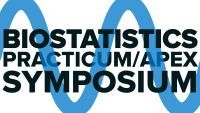Biostatistics Practicum
Biostatitics students are required to complete one term of practical experience (280 hours total) to enrich and supplement the more traditional academic aspects of the program. The practicum, which provides a view of career opportunities after graduation, may be completed during the school year or over the summer. In consultation with your faculty advisor—who must approve both the proposed practicum project prior to its initiation and the report submitted at its conclusion—you are encouraged to craft an individualized practicum experience tailored to your interests and goals. All students will present their practicum experience during their last Spring semester at the Practicum Poster Symposium.
Mailman School Practicum Resources
The Office of Careers and Practice (OCP) and is invaluable resources for identifying additional local, regional, national, and global internship opportunities for Mailman students.
For MPH students, once you identify a practicum opportunity of interest, you must submit a Scope of Work form to OFP and complete the department's practicum form which will require faculty advisor approval. Upon successful completion of the practicum, you must promptly submit an online practicum completion form to OFP in order to meet your graduation requirement.
